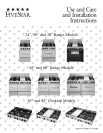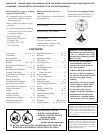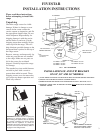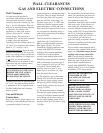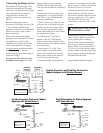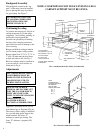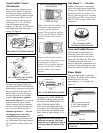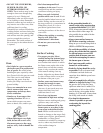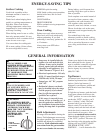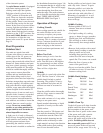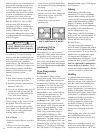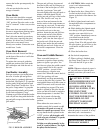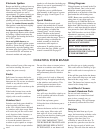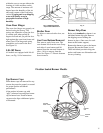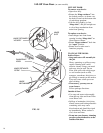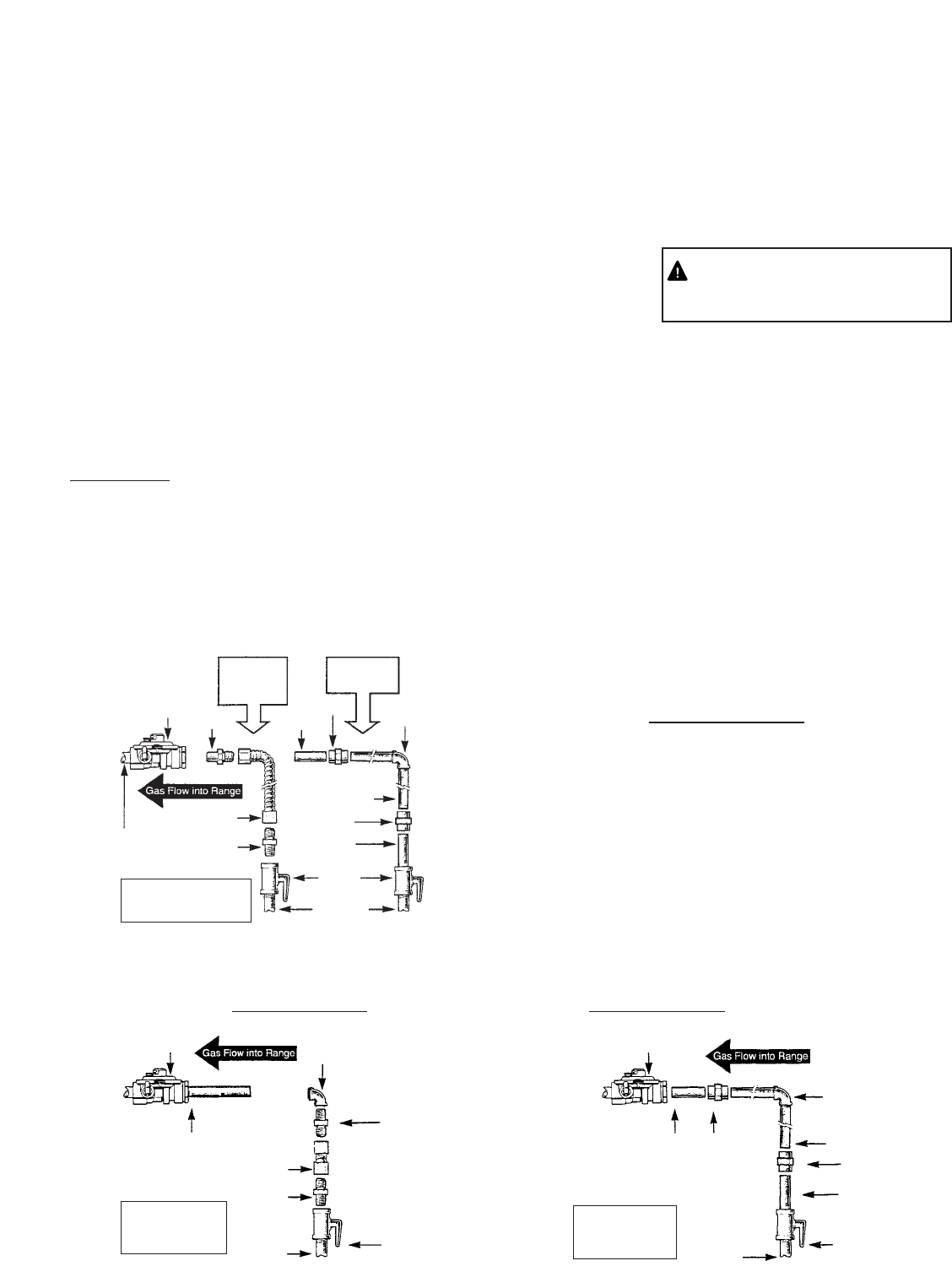
Connecting the Range to Gas
Shut off the main gas supply valve
before disconnecting the old range
and leave it off until new hook-up has
been completed. Don’t forget to
relight the pilot on other gas
appliances when you turn the gas
back on.
Because hard piping restricts
movement of the range, the use of an
A.G.A.-certified flexible metal
appliance connector is recommended
unless local codes require a hard-
piped connection.
When codes require hard piping,
piping must be recessed into or enter
through the rear wall, See Fig. 1.
Openings are provided in the back
cover for through the wall piping.
On sealed b
urner models the nipple
provided, See Fig. 4, must be
removed and replaced with piping as
illustrated in Fig. 5.
Never use an old connector when
installing a new range. If the hard
CAUTION: DO NOT USE A FLAME
TO CHECK FOR GAS LEAKS.
piping method is used, you must
carefully align the pipe; the range
cannot be moved after the connection
is made.
To prevent gas leaks, put pipe joint
compound on, or wrap pipe thread
with Teflon* tape all around male
(external) pipe threads.
1. Install a manual gas shut-off valve
in the gas line in an easily accessed
location outside of the range. Make
sure everyone operating the range
knows where and how to shut off the
gas supply to the range.
2. Install male 1/2” flare union
adapter to the 1/2” NPT internal
thread at inlet of the regulator. Use a
backup wrench on the regulator fitting
to avoid damage.
3. Install male 1/2” or 3/4” flare
union adapter to the NPT internal
thread of the manual shut-off valve,
taking care to back-up the shut-off
valve to keep if from turning.
4. Connect flexible metal appliance
When using test pressures greater
than 1/2 psig to pressure test the gas
supply system of the residence,
disconnect the range and individual
shut-off valve from the gas supply
piping. When using test pressures of
1/2 psig or less to test the gas supply
system, simply isolate the range from
the gas supply system by closing the
individual shuf-off valve.
connector to the adapter on the range.
Position range to permit connection at
the shut-off valve or vise versa.
5. When all connections have been
made, make sure all range controls
are in the off position and turn on the
main gas supply valve. Use a liquid
leak detector at all joints and
connections to check for leaks in the
system.
FIG. 3
FIG. 5FIG. 4
Flexible Connector and Rigid Pipe Hookups for
Models Equipped with Standar
d Bur
ners
Flexible Connector Hookup for Models
Equipped with Sealed Bur
ners
Rigid Pipe Hookup for Models Equipped
with Sealed Bur
ners
Installer: Inform the
consumer of the location
of the gas shut-off valve.
Installer: Inform the
consumer of the
location of the gas
shut-off valve.
Installer: Inform the
consumer of the
location of the gas
shut-off valve.
5
*Teflon: Registered trademark of Dupont.
Pressure
Regulator
Pressure
Regulator
Pressure
Regulator
Adapter
Adapter
Adapter
Nipple
Union
90˚
Elbow
90˚ Elbow
90˚
Elbow
Flexible
Connector
Hookup
Rigid Pipe
Hookup
Black Iron Pipe
Black
Iron Pipe
Union
Nipple
Union
Nipple
Union
Nipple
Nipple (provided)
Gas
Shut-off
Valve
Gas
Shut-off
Valve
Gas
Shut-off
Valve
1/2” or 3/4”
Gas Pipe
1/2” or 3/4”
Gas Pipe
1/2” or 3/4”
Gas Pipe
Adapter
Manifold Pipe
Flex Connector
(6 ft. max.)
Flex Connector
(6 ft. max.)



